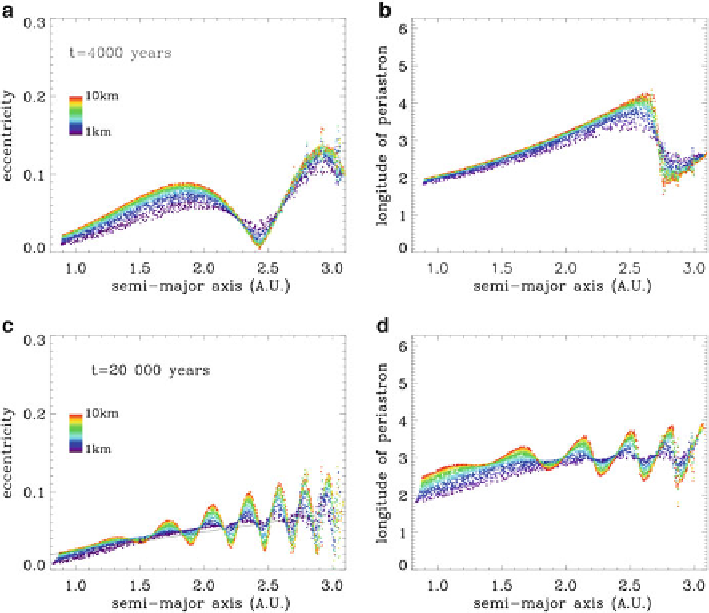Geoscience Reference
In-Depth Information
Fig. 13.3
Evolution of a planetesimal population in a close binary when taking into account
gas drag.
Left panel:
eccentricity.
Right panel
: longitude of periastron (the binary's longitude of
periastron is 0). The binary configuration corresponds to the HD 196885 case, i.e. M
2
=M
1
D
0:35,
a
b
0:42. The gas disc is assumed to be axisymmetric and has a density
profile corresponding to the theoretical Minimum Mass Solar Nebula (MMSN, see Hayashi
1981
).
Planetesimals have sizes 1
D
21 AU and e
b
D
s
10 km (Modified from Thebault
2011
)
comes, however, at a price, which is that the collision rate strongly decreases, so
that accretion can only proceed very slowly. Moreover, the results of Fragner et al.
(
2011
) seem to indicate that taking into account the effect of the gas disc's gravity
could offset this positive effect of orbital inclination, leading to high-v dynamical
environments (see below).
13.4.3
More Sophisticated Models: Gas Is Still a Problem
This globally negative effect of the gas on planetesimal accretion had been identified
in studies considering fiducial static and axisymmetric gas discs, and one could
not rule out that this result could be an artefact due to the simplified gas-disc

Search WWH ::

Custom Search